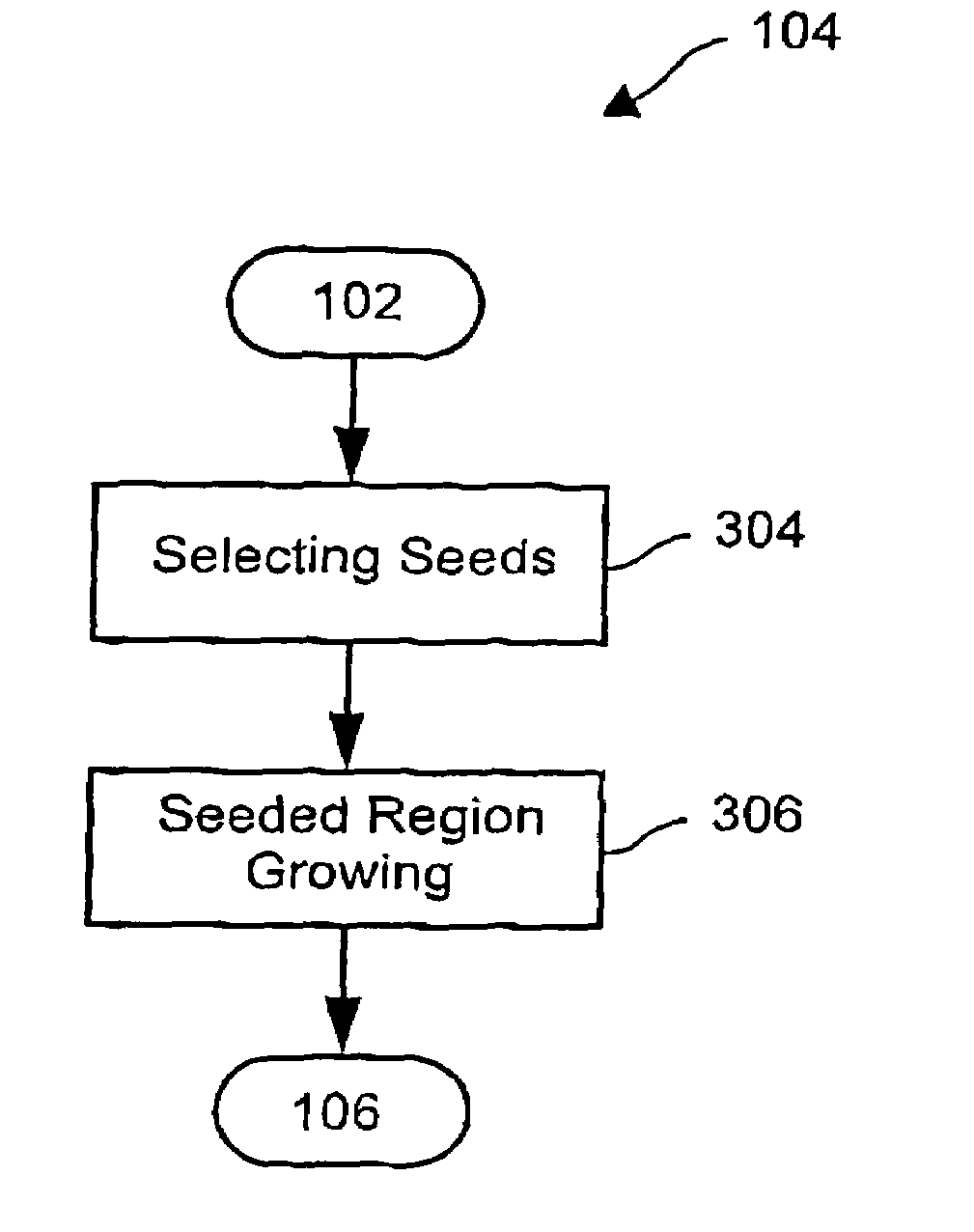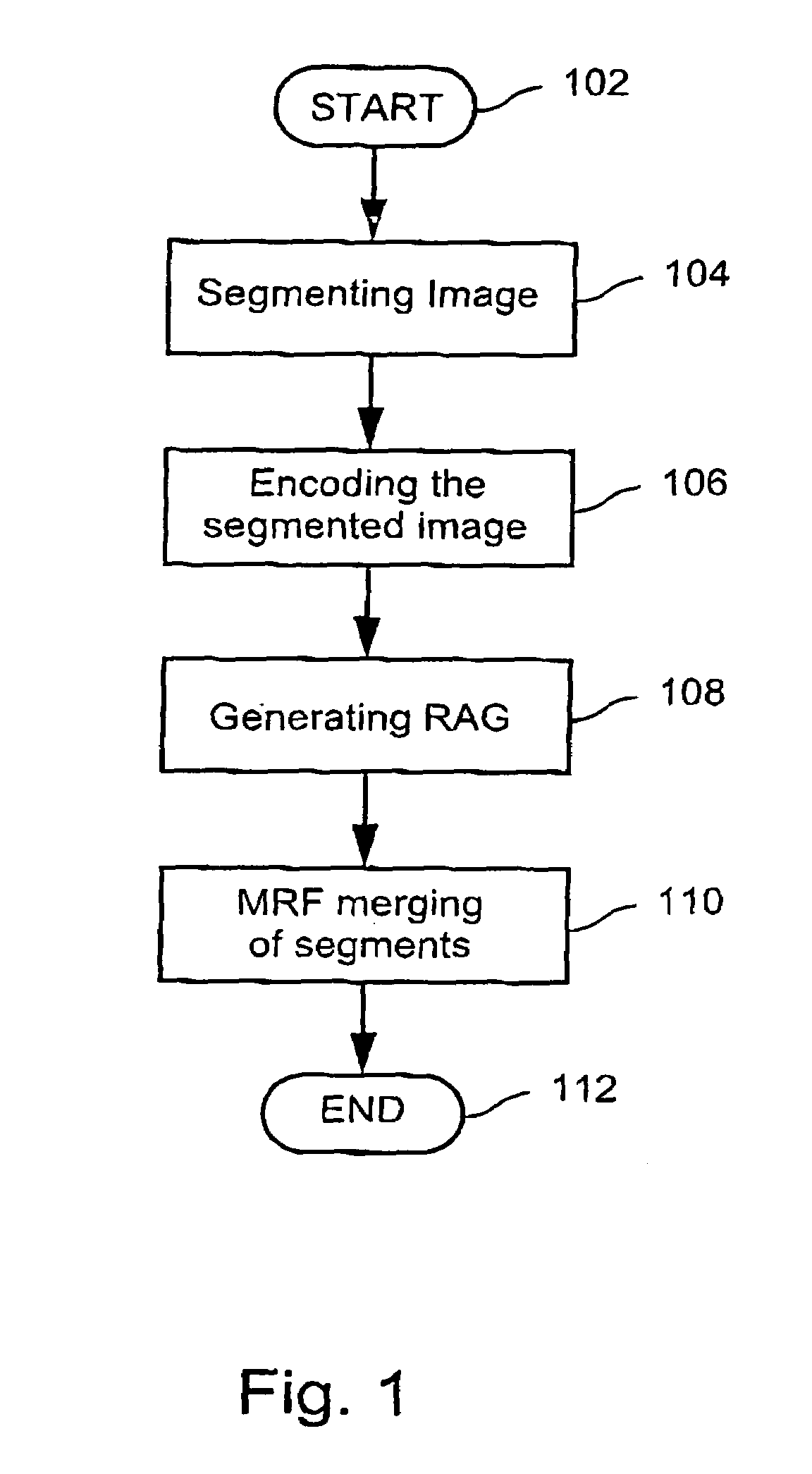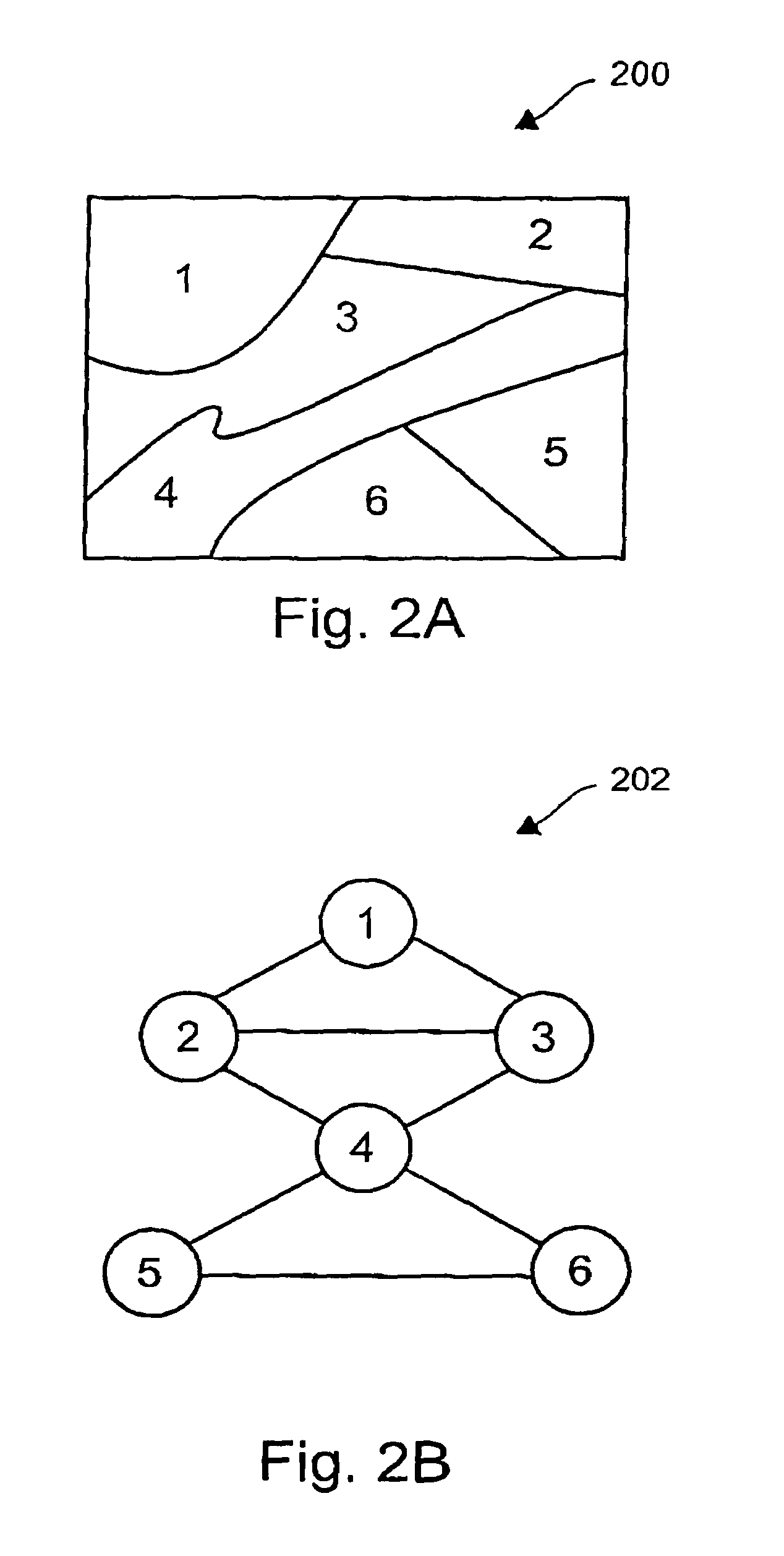Method and apparatus for segmenting images
a technology for segmenting images and images, applied in image analysis, image enhancement, instruments, etc., can solve the problems of slow image segmentation, method failure to split regions that must be separated or fail to merge regions that need not be separated, and method failure to achieve images
- Summary
- Abstract
- Description
- Claims
- Application Information
AI Technical Summary
Benefits of technology
Problems solved by technology
Method used
Image
Examples
Embodiment Construction
[0047]Where reference is made in any one or more of the accompanying drawings to steps and / or features, which have the same reference numerals, those steps and / or features have for the purposes of this description the same function(s) and / or operation(s), unless the contrary intention appears.
[0048]The principles of the preferred method have general applicability to the segmentation of multiple colored or black and white images. The method has been described with reference to a number of specific examples of images and it is not intended that the invention be limited to such specific examples.
1.0 Overview of Preferred Method
[0049]FIG. 1 is a flow diagram of a method of segmenting an image in accordance with a preferred embodiment of the invention. The method commences at step 102, where image data is inputted and any necessary parameters are initialized. The image data is a pixel-map representation of an original image. The pixel-map includes a numerical representation of the partic...
PUM
 Login to View More
Login to View More Abstract
Description
Claims
Application Information
 Login to View More
Login to View More - R&D
- Intellectual Property
- Life Sciences
- Materials
- Tech Scout
- Unparalleled Data Quality
- Higher Quality Content
- 60% Fewer Hallucinations
Browse by: Latest US Patents, China's latest patents, Technical Efficacy Thesaurus, Application Domain, Technology Topic, Popular Technical Reports.
© 2025 PatSnap. All rights reserved.Legal|Privacy policy|Modern Slavery Act Transparency Statement|Sitemap|About US| Contact US: help@patsnap.com



